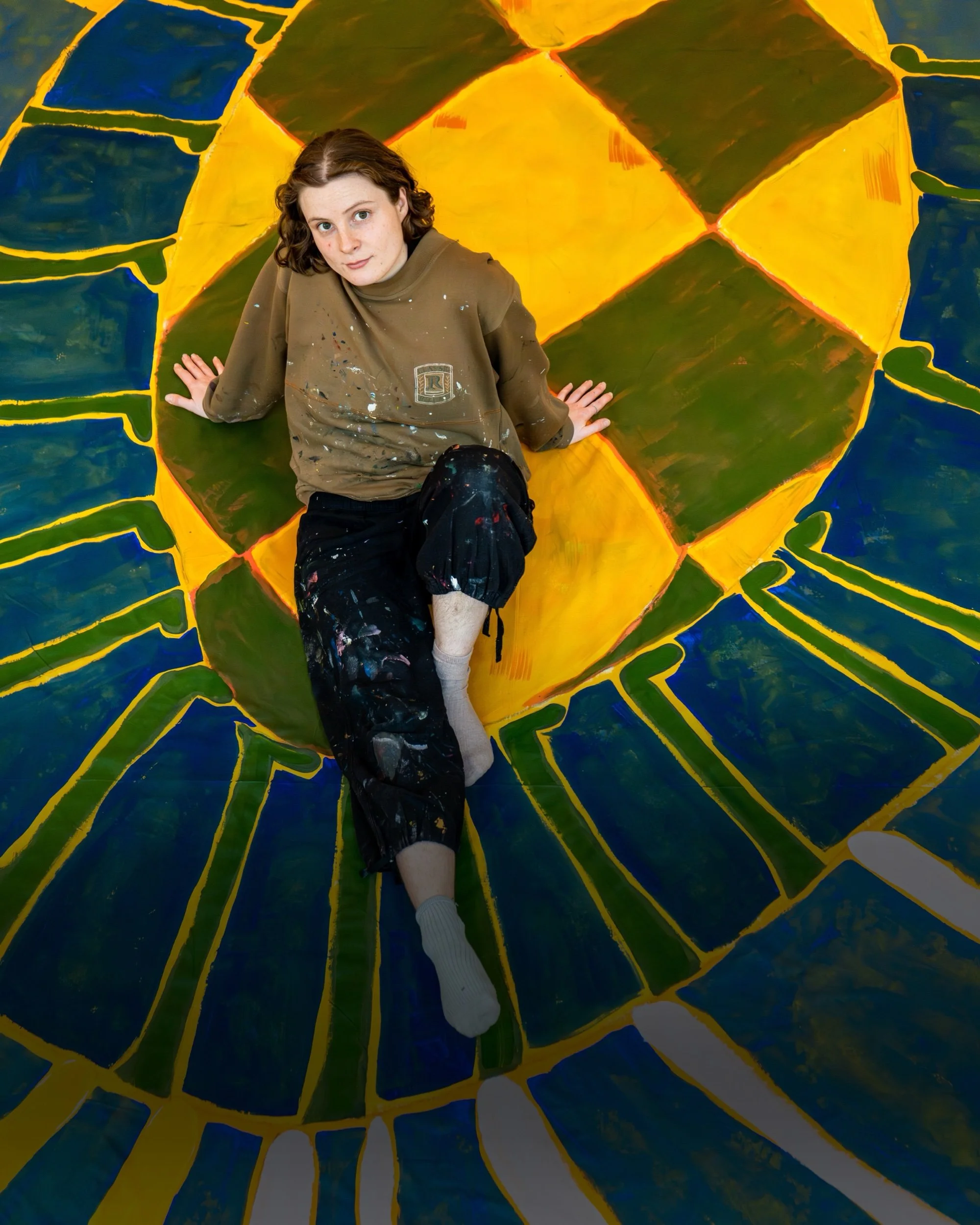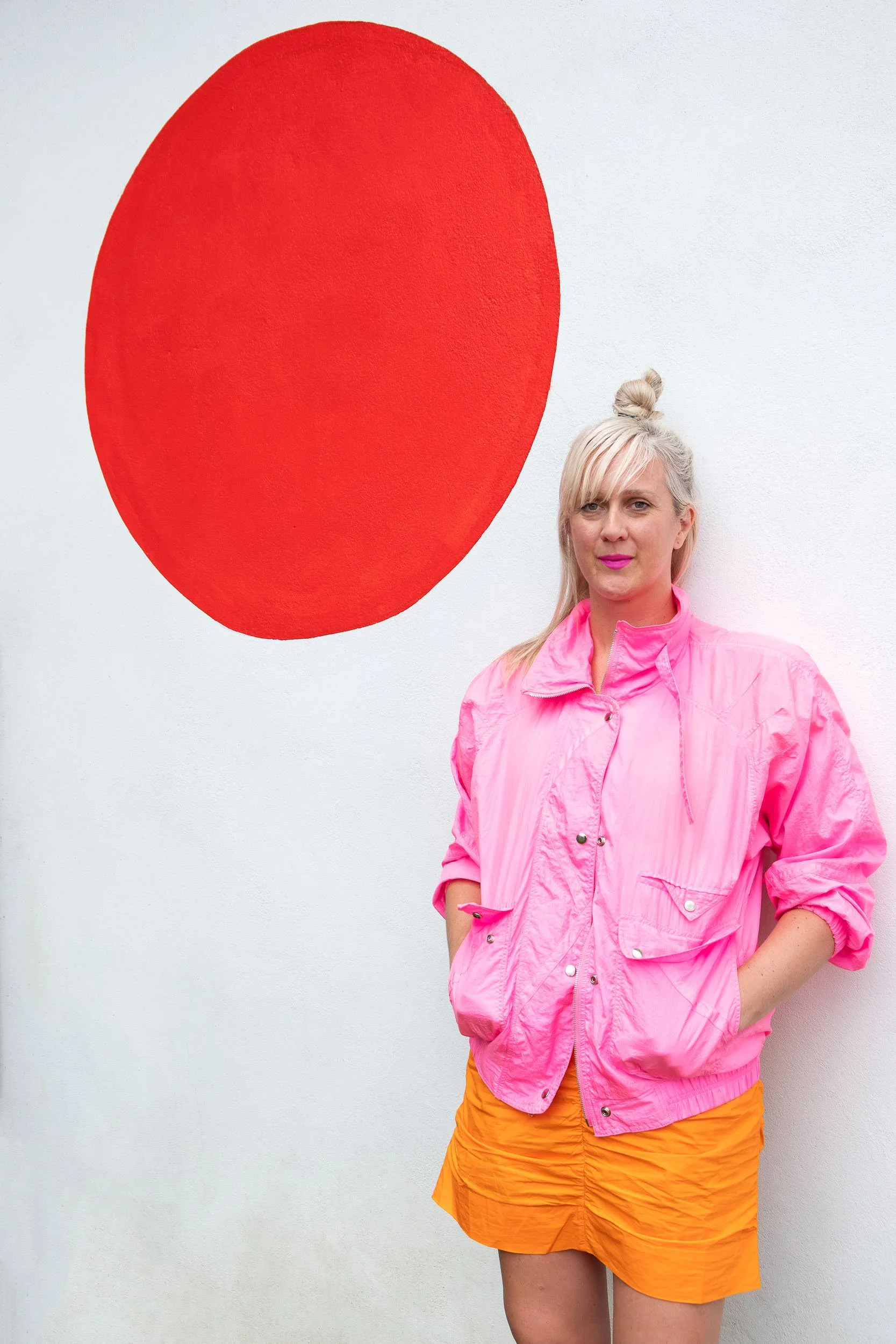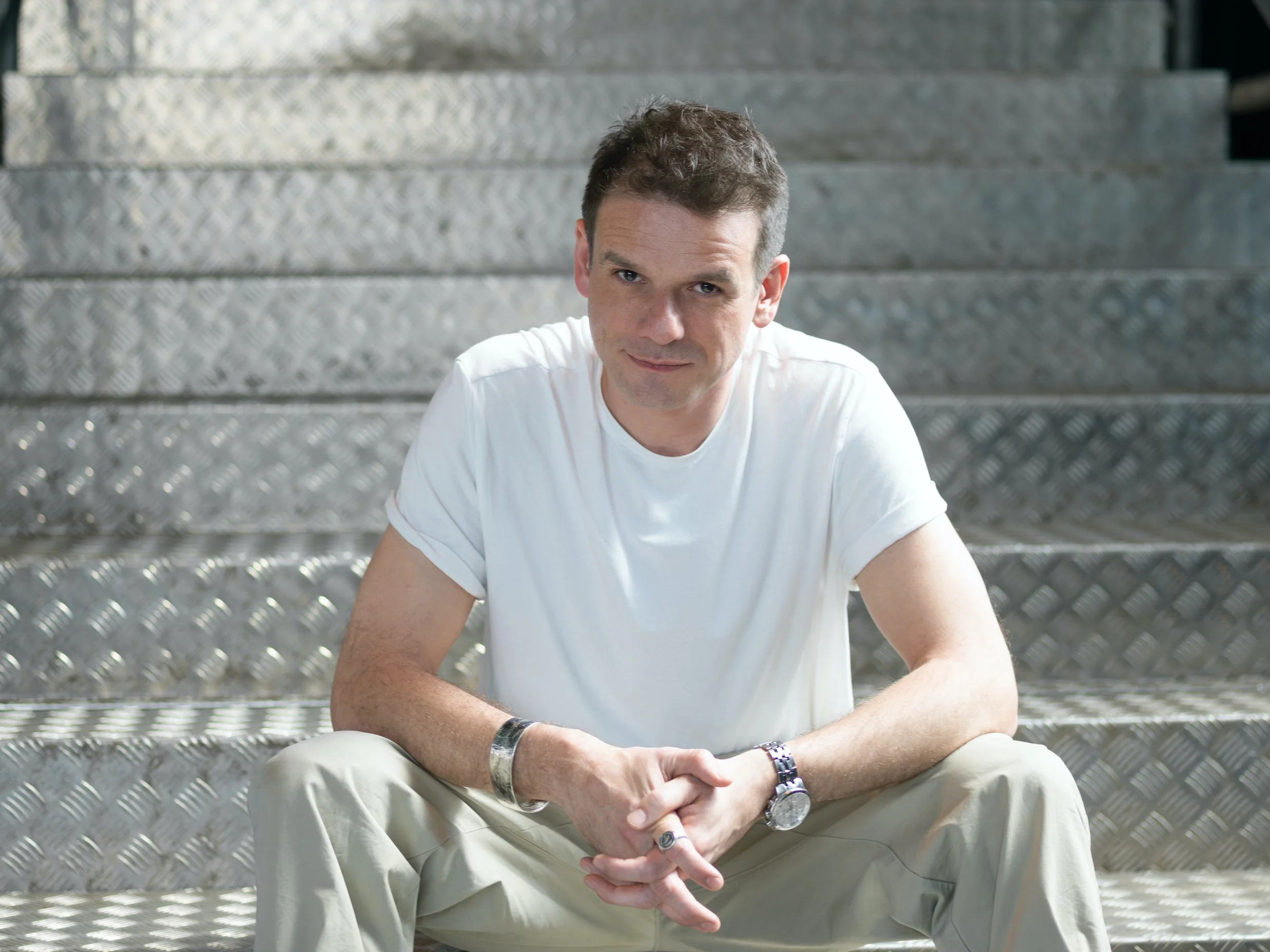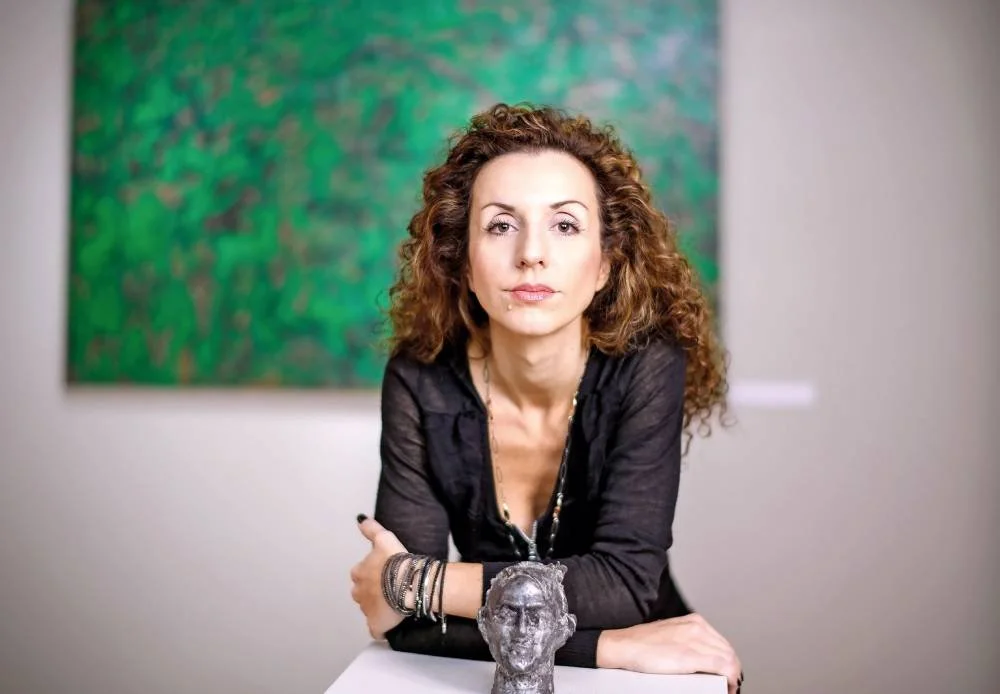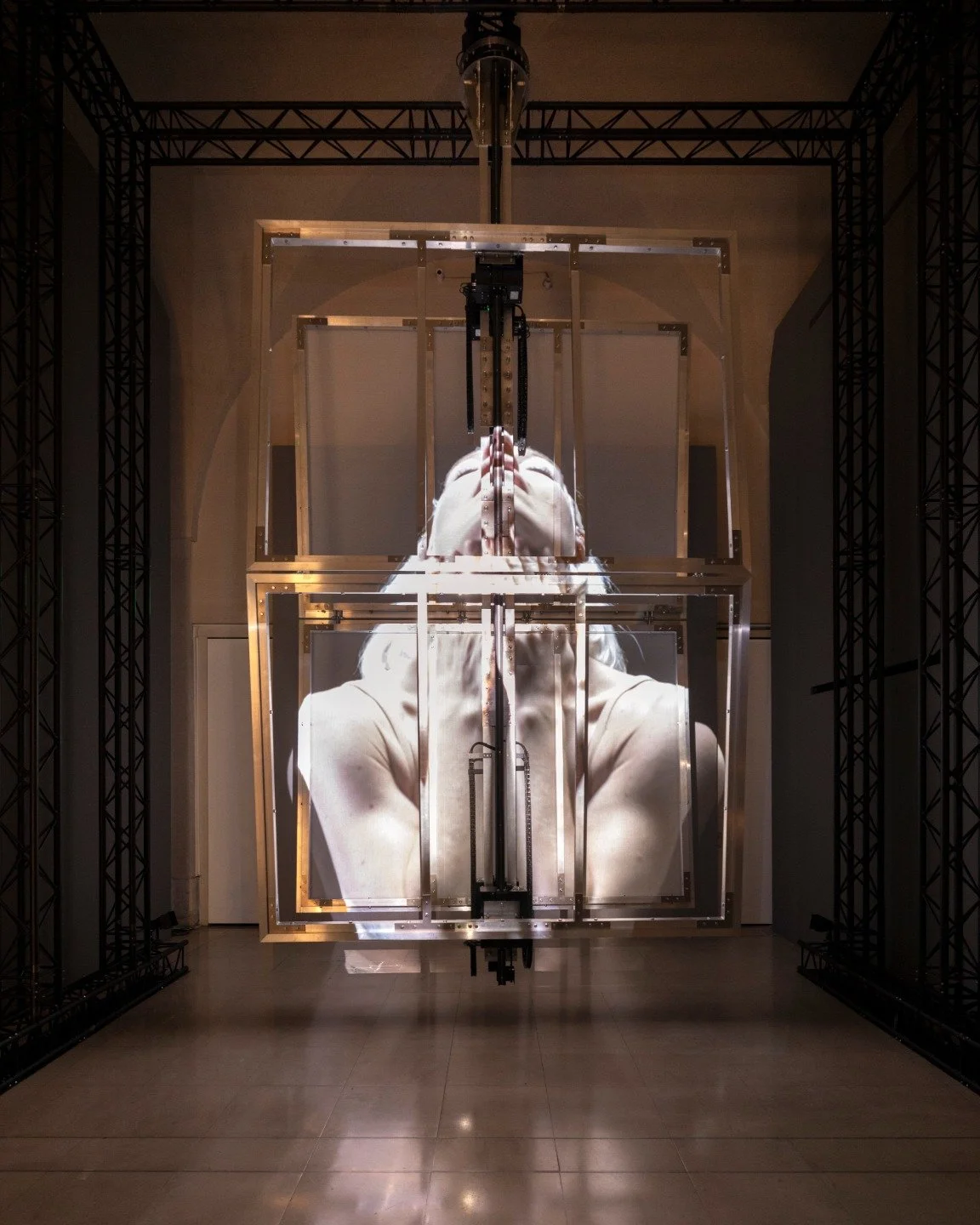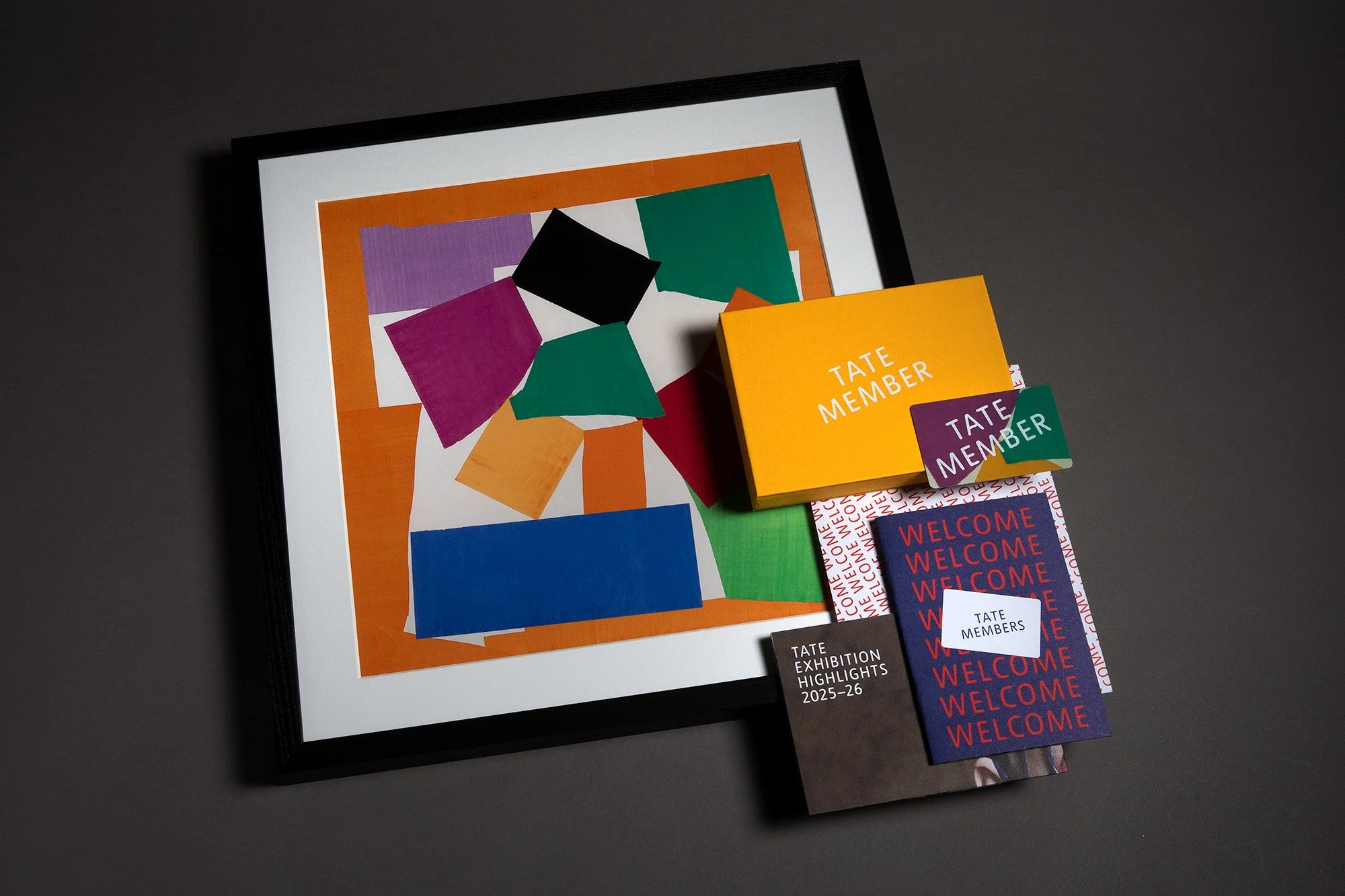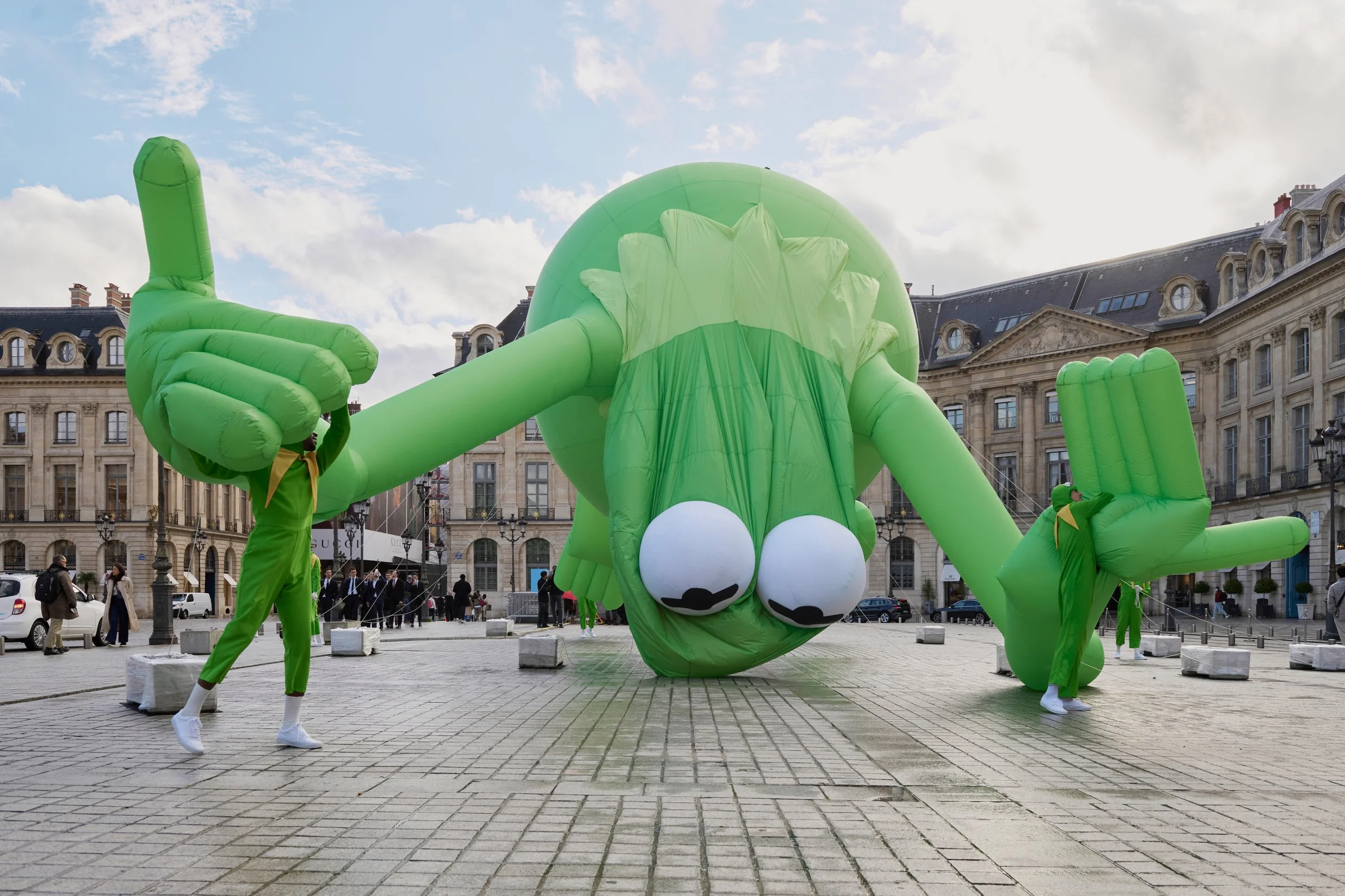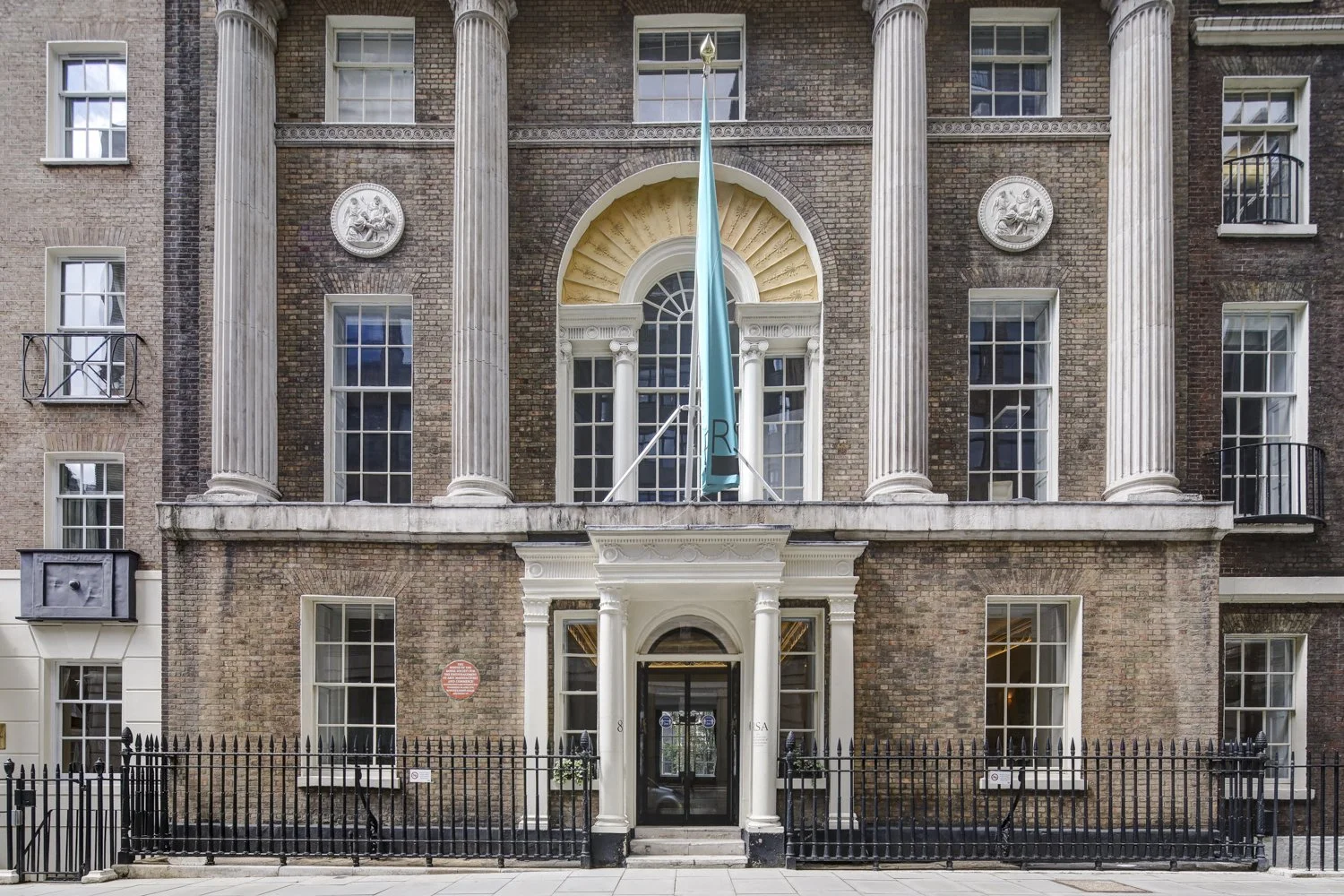In conversation with Daniel Pitt
“…we also wanted to ensure that the Trail was both truly community-led and socially-engaged, and that there was diversity in the artistic forms, aesthetics and the artists themselves. ”
- Daniel Pitt

Daniel Pitt in front of Old Diorama Arts Centre. Image credit Matt Mahmood-Ogston.
Daniel is a curator-producer committed to the social power of the arts, and the possibilities of cross-sectoral collaboration to change our world. He's currently Creative Director & Chief Executive of Old Diorama Arts Centre (ODAC), a centre for creation and communities in Euston, where he has led the charity through a period of increased impact, reconnecting with its local communities in the context of major urban change in the area.
Previously he was Director at Chisenhale Dance Space in Bow; co-founded and directed Dutch-UK outdoor arts project In Your Way in Cambridge; co-curated 2018’s international Roundhouse CircusFest; and spent more than four years as producer at Cambridge Junction arts centre. He started his career at producers Crying Out Loud, where he helped turn Piccadilly Circus into a surprise circus as part of the Cultural Olympiad London 2012 Festival.
What was the initial vision behind the Regent’s Park Estate Story Trail, and how did it evolve over time?
The official aims of the project were to support way finding, build community pride, promote community safety, and increase use of green spaces across Regents Park Estate. Alongside those, in making it happen, we also wanted to ensure that the Trail was both truly community-led and socially-engaged, and that there was diversity in the artistic forms, aesthetics and the artists themselves.
In this area of long-term, disrupted urban change due to HS2 and the wider Euston regeneration, residents feel ‘over-consulted’ with and see little impact. So it’s also a project about resident-empowerment: this is a project which residents conceived and have been involved with making it happen at all levels, which is actually happening!
Overall, we wanted to make something happen that is artistically impressive and practically improbable, that the residents who have been involved can see their influence on, and that other people will love and care for, that interrupts daily life in the best way possible.
Where else can you experience a permanent exhibition that allows you to converse with an AI-powered voice of a 200-year-old tree; see community’s experience of the seasons through a kaleidoscope; view a block-sized photo project which was all shot by turning a flat into a camera; a mural that brings an unloved green space to life; a light project; text-based works and Woman Whole manhole covers - in a housing estate?

You Are Here - Ocean Stefan, This Community. Image credit Nick Turpin.
How did you ensure that the residents’ voices and ideas were at the core of the art trail’s development?
There have been so many ways, allowing for a range of different access points and levels of commitment over four years. The project was conceived by residents attending Community Champions Regent’s Park social action group (which is managed by Fitzrovia Youth in Action, and has a home at ODAC) - at some points that's about 40 people, who acted as a volunteer ‘steering group’ throughout the process.
Larger scale engagement on the idea for the project on the locations and stories took place at community events and outdoor festivals in 2022 and 2023. From there, we developed a detailed brief for artists, with options for locations and stories which could form the jumping-off point for their ideas.
We then recruited three paid Regent’s Park Estate-resident Neighbourhood Curators - Bahja, Rukshana and Chrissie - to join ODAC’s staff team for the project, working a few hours per week, with responsibilities for decision making and community engagement.
The interview process for artists included a long list of 20 artists being invited for a (paid) afternoon visit to the Estate, where the Neighbourhood Curators led a personal guided tour and then they met more residents. The interview panel included the Neighbourhood Curators and we made the decisions together.
Once the artists were appointed, depending on their interests, projects and methods, we made a plan for their specific community engagement processes, which often included both open-access workshops and visits to existing community groups, organisations and schools in the estate, and Regent’s Roots festival 2024. The range of socially engaged practices and methods the artists used to ensure residents are truly part of their projects are so varied.
The Neighbourhood Curators have also documented the project in their ways: Rukshana and Chrissie have made an audio tour in English and Syhleti, and Bahja has made a film.
We think this really constitutes something exemplary in community engagement for a project like this and has set a precedent for the ways in which ODAC continues to work.
Can you talk about the process of selecting the 10 artists and how they were matched with specific locations on the estate?
The locations came first - it’s a site-responsive process. A large list was created over a couple of years of work with the Community Champions and Central Saint Martins, and discussed at public events, then narrowed down. They were locations identified either because they were tied to stories (something historic or personal or recent changes such as lost spaces from HS2 developments) or there was some form of ‘problem’ about them, like they were frequently subject to vandalism or needed some love. The aim is to increase pride in the area, and we’ve already seen that the artworks installed in places that needed some love - such as Shiraaz Ali’s mural by Pangbourne have been loved and protected by the community.
Many artists came into the process knowing that a particular site or story was what inspired them, and others we had ideas about where their work could fit best - that was part of the commissioning process. However there was also then a complicated pragmatic process that had to happen to make it all possible in the long-term. This occurred alongside other changes in the area and came together curatorially as part of a trail.

Regent's Park Portrait - Brendan Barry. Image credit Nick Turpin.
What role do you think public art can play in transforming the social and cultural fabric of a community like Regent’s Park Estate?
Changing anything is a process, let alone something as massive and complex as society and culture. On its own, I don’t believe ‘a piece of public art’ can do this. But the process that the community has gone through with ODAC and our producing partners on making this project happen, and creating the artists 10 commissions which make it up, have been part of making change. Long-term commitment and investment from cross-sectoral partners, collaborating with residents in an area can make this change - and I see it happening in Regent’s Park Estate. The Story Trail is just one -but a very visible- case study in the area.
The Story Trail, interlinked with the journey of Community Champions Regent’s Park and the reimagining of ODAC’s relationship with its local communities has been a process that goes back 4 years (two of which we would say were project delivery). 10 artists have created their own social engagement processes that have culminated in a permanent, interactive, public art trail, and that feeds into a wider process of a community getting organised, getting creative, and the urban stakeholders round here taking notice and helping. ODAC is one of a few key charities who are working in this area, nurturing and empowering resident action. We use artists and resident collaboration, responding to social needs, as our method.
I’ve always been convinced that the arts can change the world, though sometimes that change is hard to see and track - but some of the conversations we are having about future projects with Camden Council and other partners really make me think that together we will transform this corner of society in tangible ways.
What has been the most rewarding aspect of collaborating with the residents throughout this process?
Seeing the artworks be installed, and come together after so long is obviously hugely rewarding, but my favourite thing about working with communities on arts projects is hearing residents talking about the value of art to other people, and about how much the experiences have meant to them.
As professional producers we all write funding applications about the impact that projects we want to make happen can have, but then to actually hear it is true delights me and drives me to continue.
What do you hope the lasting impact of the Regent’s Park Estate Story Trail will be on both the artists and the local community?
The project was conceived as a creative way to increase residents’ pride in the area, celebrate the lesser-known histories and identity of the area, collectively process some of the impact of changes to the estate due to HS2, and therefore hopefully reduce some elements of antisocial behaviours as a bi-product. Our collaborators at Central Saint Martins are from the Design Against Crime research centre. Time will tell if we have succeeded.
As I watched Brendan Barry’s photographic artwork be heat-fixed to a wall on the busiest street in the estate at the end of last year, Steve - a resident and Community Champion who has been with us on the whole journey, and a musician - said to me how excited he was to see everyone’s reactions and he thought it was going to raise the whole community’s interest in engaging with the arts elsewhere too. Honestly, for months the project was so difficult to make happen that the daily firefighting was all we could think about. It was lovely to hear because of course that’s the hope: that’s fundamentally our ODAC’s charitable aim and we’re committed to continuing to nurture this through our other programmes. We’ve got to get those legacy projects sorted quick!

Growing Together - Shiraaz Ali. Image credit Nick Turpin.
The [Quick] #FLODown:
Best life advice?
Harness enthusiasm and keep momentum.
Last song you listened to?
I’m quite committed to the album format rather than songs on shuffle. Currently listening to Lucy Dacus’ new album, Forever Is A Feeling.
Last book you read?
I’m just starting Miranda July’s All Fours, having loved her previous work. Over the last few months I’ve been enjoying a subscription to Stack, an independent magazine club, which sends monthly short-form things I wouldn’t otherwise read!
Can’t live without...?
Delicious food and people to eat it with me.
What should the art world be more of and less of?
The world is ever-increasingly cross-disciplinary, and I think the arts are still catching up.
Old Diorama Arts Centre is launching the Regent’s Park Estate Story Trail on 24 April 2025.
Charlotte Winifred Guérard is a London-based artist and recent graduate of the Royal Academy of Arts School, where she was recognised as a Paul Smith’s Foundation scholar for her artistic achievement. Her work has been exhibited at the Royal Academy, Coleman Project Space, Fitzrovia Gallery, Messums and Palmer Gallery, and she has completed prestigious residencies including…
BBC Radio 1 presenter, DJ, podcaster, and award-winning entrepreneur Jaguar joined us for our In conversation with series to discuss her journey from sneaking out to raves on the tiny island of Alderney to becoming a tastemaker in the UK dance scene, her debut EP flowers…
Annie Frost Nicholson is an artist whose work sits at the electric intersection of personal memory, public ritual and emotional release. Known for transforming private grief into bold, colour-saturated experiences - from stitched paintings to micro-discos - Annie’s practice creates space for collective healing without losing the rawness of its origins…
We spoke to visionary director Łukasz Twarkowski ahead of the UK premiere of ROHTKO, a groundbreaking production that takes inspiration from the infamous Rothko forgery scandal to ask urgent questions about originality, truth and value in art today. Combining theatre, cinema, sound and digital technology, the work challenges…
Iranian-born British curator and producer Tima Jam is the Founder of Art Voyage, a new migrant-led cultural platform committed to building a dynamic, equitable, and globally connected arts ecosystem through novel initiatives comprising exhibitions, public art, summits, residences, and community engagement to create a lasting cultural and social impact…
Betty Ogundipe (b. 2001) is a multidisciplinary artist of Nigerian heritage whose work explores resilience, femininity, and the power of love and resistance. Her debut solo exhibition, LOVE/FIGHT at Tache Gallery…
Absolut Vodka celebrated the launch of its Keith Haring Artist-Edition bottle with a public art takeover, transforming London’s Charing Cross station into “Haring Cross” on 17–18 September. We spoke with Deb Dasgupta, Absolut’s Vice President of Global Marketing…
Maya Gurung-Russell Campbell is an artist working across sculpture, image, and text, exploring personal and collective memory. She is currently studying at the Royal Academy Schools (graduating 2026) and holds a BA in Photography from the London College of Communication…
YARA + DAVINA make social practice artwork, creating ambitious public artworks that respond to site, context and audience. Unfailingly inventive, they use formats from within popular culture to make works which are accessible and playful…
Benni Allan is the Founding Director of EBBA Architects, a London-based studio recognised for its ambitious, cross-disciplinary approach that bridges architecture, culture, fashion and design. Benni founded EBBA to unite his passion for architecture, making and collaborative practice. In this interview, Benni discusses EBBA’s ethos and Pulse, a new installation commissioned for Houghton Festival at Houghton Hall…
Oskar Zięta is an architect, process designer and artist whose work challenges the boundaries between disciplines. His practice brings together design, engineering, art and bionics to create sculptural forms. His latest installation, ‘Whispers’, is currently on display outside One New Ludgate as part of the London Festival of Architecture 2025…
Danny Larsen is a Norwegian artist who has transitioned from a successful career in professional snowboarding to establishing himself as a distinctive painter. His detailed neo-pointillist landscapes reflect a deep connection to nature and a personal journey of transformation. Ahead of his debut London solo exhibition…
Nimrod Vardi and Claudel Goy, directors of arebyte Gallery, discuss how the space is redefining digital art by blending technology, social science, and immersive experiences. From AI and consciousness to the societal impact of tech, arebyte’s bold exhibitions go beyond visual spectacle, focusing on meaningful engagement and innovative presentation…
Varvara Roza is a London-based private art advisor and artist representative. She specialises in promoting contemporary art by both established and emerging international artists. In our conversation, we discussed her unique approach to the art market…
David Ottone is a Founding Member of Award-winning Spanish theatre company Yllana and has been the Artistic Director of the company since 1991. David has created and directed many theatrical productions which have been seen by more than two million spectators across 44 countries…
Akinola Davies Jr. is a BAFTA-nominated British-Nigerian filmmaker, artist, and storyteller whose work explores identity, community, and cultural heritage. Straddling both West Africa and the UK, his films examine the impact of colonial history while championing indigenous narratives. As part of the global diaspora, he seeks to highlight the often overlooked stories of Black life across these two worlds.
Gigi Surel is the founder of Teaspoon Projects, a groundbreaking cultural initiative launching in London with its first exhibition and programme. Dedicated to exploring contemporary storytelling, Teaspoon Projects blends visual arts and literature while encouraging audience participation through carefully curated events.
Dian Joy is a British-Nigerian interdisciplinary artist whose work delves into the intersections of identity, digital culture, and the fluid boundaries between truth and fiction. Her practice is rooted in examining how narratives evolve and shape perceptions, particularly in the digital age.
Youngju Joung is a South Korean artist known for her paintings of shanty village landscapes, illuminated by warm light. Inspired by memories of her childhood in Seoul, she uses crumpled hanji paper to create textured, lived-in spaces that reflect both poverty and affluence.
John-Paul Pryor is a prominent figure in London’s creative scene, known for his work as an arts writer, creative director, editor, and songwriter for the acclaimed art-rock band The Sirens of Titan…
Poet and novelist Hannah Regel’s debut novel, The Last Sane Woman, is a compelling exploration of the emotional lives of two aspiring artists living at different times, yet connected by the discovery of a box of letters in a forgotten feminist archiv…
Daria Blum, a 2023 RA Schools graduate, won the inaugural £30,000 Claridge’s Royal Academy Schools Art Prize in September. Her exhibition, Drip Drip Point Warp Spin Buckle Rot, at Claridge’s ArtSpace...
We recently interviewed Eden Maseyk, co-founder of Helm, Brighton’s largest contemporary art gallery, which has quickly established itself as a thriving cultural hub…
Lina Fitzjames is a Junior Numismatist at Baldwin’s Auction House, located at 399 Strand. She is part of a new generation reshaping the image of numismatics, the study of coinage….
Sam Borkson and Arturo Sandoval III, the acclaimed LA-based artists behind the renowned collective "FriendsWithYou," are the creative minds behind "Little Cloud World," now on display in Covent Garden. During their recent visit to London, we had the privilege of speaking with them about their creative process and the inspiration behind this captivating project.
Paul Robinson, also known as LUAP, is a London-based multimedia artist renowned for his signature character, The Pink Bear. This character has been featured in his paintings, photography, and sculptures, and has travelled globally, experiencing both stunning vistas and extreme conditions…
Koyo Kouoh is the Chief Curator and Executive Director of Zeitz MOCAA…
Matilda Liu is an independent curator and collector based in London, with a collection focusing on Chinese contemporary art in conversation with international emerging artists. Having curated exhibitions for various contemporary art galleries and organisations, she is now launching her own curatorial initiative, Meeting Point Projects.
Lily Lewis is an autodidact and multidisciplinary artist working in the realms of the narrative, be that in the form of a painting, a poem, large scale sculptures, tapestry, or performance…
Paul Vanstone is a sculptor recognised for his expertise in marble carving and depiction of human figures and fabric using light and stone interplay. He studied at Central St. Martins School of Art and completed an MFA at the Royal College of Art…

Explore Belgravia this Christmas with a festive pub crawl through London’s most charming historic pubs, from The Grenadier’s cosy mews hideaway to The Nags Head’s quirky classic tavern…
From the joys of Christmas at Kew to the lively Smithfield meat auction, and from major concerts and ballets to intimate workshops and family-friendly trails, the city offers an extraordinary mix of experiences. This guide brings together the very best of Christmas in London…
This guide highlights some of the must-see art exhibitions to visit over the festive period in London, including the days between Christmas and New Year’s. From major retrospectives of international masters such as Kerry James Marshall, Wayne Thiebaud, and Anna Ancher, to engaging contemporary works by Danielle Brathwaite-Shirley, Jennie Baptiste, and Tanoa Sasraku…
London’s cultural scene, a gallery or museum membership is the perfect alternative to another pair of socks. From unlimited access to exhibitions and exclusive events to discounts in shops and cafés, these memberships offer experiences that can be enjoyed throughout the year, while also supporting the vital work of arts organisations…
Your guide to London’s can’t-miss events this week, 17–23 November 2025, from Cabaret Voltaire live at ICA to Ballet Shoes at the National Theatre and The Evolution of UK Jazz at the Barbican…
Charlotte Winifred Guérard is a London-based artist and recent graduate of the Royal Academy of Arts School, where she was recognised as a Paul Smith’s Foundation scholar for her artistic achievement. Her work has been exhibited at the Royal Academy, Coleman Project Space, Fitzrovia Gallery, Messums and Palmer Gallery, and she has completed prestigious residencies including…
This week in London, you can enjoy festive ice skating, Christmas lights, jazz and classical concerts, and a range of art exhibitions. Highlights include Skate at Somerset House, Christmas at Kew, the EFG Jazz Festival, and the Taylor Wessing Photo Portrait Prize 2025…
From the 6th to the 9th of November, the leading West African art fair Art X Lagos celebrates its 10th birthday at the Federal Palace on Victoria Island. Founded by Tokini Peterside-Schwebig in 2016, the fair has become an unmissable event in the global art calendar, attracting galleries from over 70 countries and participants from 170 countries since its launch…
If you’re after something bold, queer and completely uncategorisable this November, you need to know about KUNSTY, the Southbank Centre’s brand new four day performance series running from 5-8 November 2025…
London’s most beloved Christmas activity is back. As festive cheer returns to the city, with twinkling lights and the scent of mulled wine drifting through the air, for many Londoners and visitors from further afield, nothing quite captures the spirit of the city at Christmas like strapping on a pair of skates and stepping onto the ice…
As the crisp autumn air settles over London, the iconic gardens of Berkeley Square are once again hosting one of the most anticipated gatherings in the art and antiques world: the LAPADA Fair 2025, running from 28 October to 2 November…
November is a lively time to be in London, with the festive season in full swing and the city buzzing with events. From skating at Somerset House to Christmas lights switch-ons and festive markets like the Southbank Centre Winter Market, there are plenty of ways to embrace the holiday spirit. Beyond the seasonal festivities, London’s cultural calendar is brimming with art, music, and performance…
As far as weekend getaways go, this 70-acre estate offers a peaceful country escape with all the best elements of a traditional hotel experience. Staffordshire, arguably, is not yet on the map for luxury and leisure but set in the heart of the beautiful Staffordshire Moorlands, The Tawny surely is a beacon of things to come…
Art Basel Paris returns to the Grand Palais for its second edition from 24–26 October 2025, bringing together 206 leading galleries from 41 countries and territories. Below is our guide to seven artists not to miss at this year’s edition, each presenting distinctive work through their galleries…
Art Basel Paris 2025’s Public Programme turns the city into a stage for contemporary art, placing bold, large-scale works in streets, courtyards, and cultural landmarks - all free to visit. From a dreamy opera of 30 surreal figures at Palais d’Iéna to a colossal Kermit the Frog balloon looming over Place Vendôme, here is our guide to five standout works from the Art Basel Public Programme that you simply cannot miss…
Frieze London 2025 returns to Regent’s Park with a dynamic mix of emerging and established galleries, reaffirming the city’s creative pulse. Highlights include Esther Schipper’s dreamlike works by Sarah Buckner, Gagosian’s vibrant installation by Lauren Halsey, and Pace’s meditative paintings by William Monk. From Do Ho Suh’s ethereal fabric architectures at Lehmann Maupin…
Paris launches into its own spectacular celebration of art each October, transforming the city into a hub for collectors, curators, and cultural enthusiasts. From the grandeur of Art Basel Paris at the newly renovated Grand Palais to the focused energy of Paris Internationale, OFFSCREEN, AKAA and Menart, each fair contributes something unique to the city’s vibrant art scene.
British Ceramics Biennial is back and better than ever. Running until 19 October 2025, the dynamic programme of free exhibitions, screenings, talks and events is proving a hit with both locals and critics…and just an hour and a half’s train away from London, it’s well worth a day trip…
Echoes of Migration is the flagship summit to launch new not-for-profit platform Art Voyage this autumn. Echoes of Migration officially inaugurates Art Voyage’s innovative, itinerant cultural programme…and gears us up for what is in store for the Art Voyage Biennial….
Betty Ogundipe (b. 2001) is a multidisciplinary artist of Nigerian heritage whose work explores resilience, femininity, and the power of love and resistance. Her debut solo exhibition, LOVE/FIGHT at Tache Gallery…
The V&A’s Marie Antoinette Style, sponsored by Manolo Blahnik, is being hailed as the first landmark exhibition in the UK devoted to France’s most infamous Queen of Fashion. It is a glittering journey through silk, flamboyance and legacy….
Malta is fast becoming one of the Mediterranean’s hottest destinations, offering sun-soaked beaches into October, a thriving arts and culture scene, and stunning architecture and landscapes…
This October in London offers everything from Frieze and the BFI Film Festival to Peggy Gou, the London Literature Festival, and Halloween at Kew.
Discover the best restaurants in Malta, where to eat, drink and enjoy authentic Maltese food and Michelin-star dining…
From The Phoenicia Hotel and Iniala Harbour House, Valletta showcases some of Malta’s finest hotels, ranging from landmark luxury where royalty once danced to boutique hideaways filled with Maltese art…
October is the month for art in London, thanks to Frieze and several other art fairs taking place across the city. There will be a significant programme of shows across the capital’s galleries and institutions. Notable openings include Cosima von Bonin’s Upstairs Downstairs at Raven Row, examining 35 years of work through objects, characters, and early pieces unseen for more than a decade; Wolfgang Tillmans’ Build From Here at Maureen Paley, and Arthur Jafa’s first exhibition at Sadie Coles HQ…
This week in London, explore modern and contemporary art at the British Art Fair, experience couture drama with LACRIMA at the Barbican, celebrate heritage at the Chelsea History Festival, enjoy a decade of dance with Acosta Danza at Sadler’s Wells, and step into Shakespeare’s world with Hamlet at the National Theatre…

